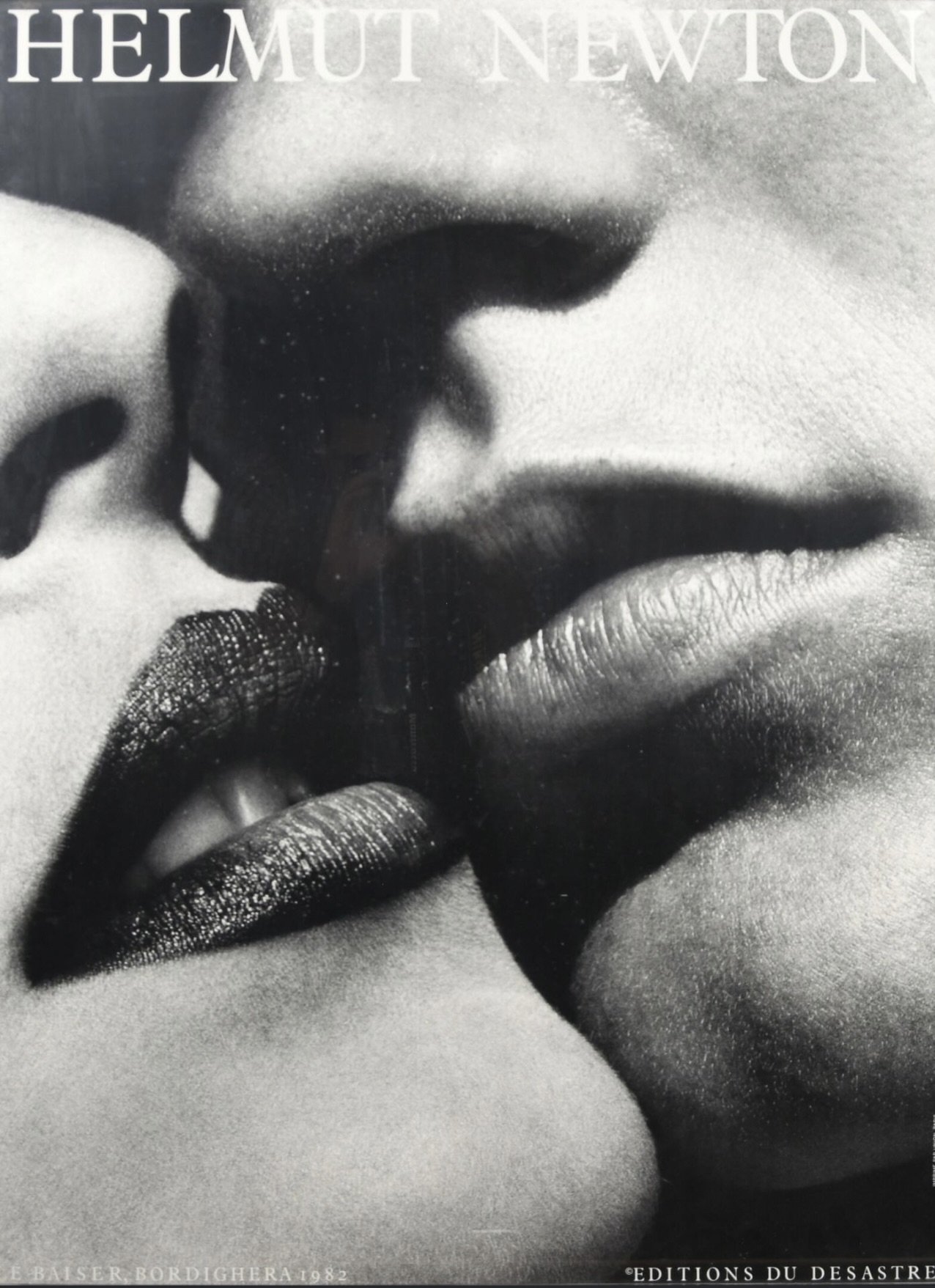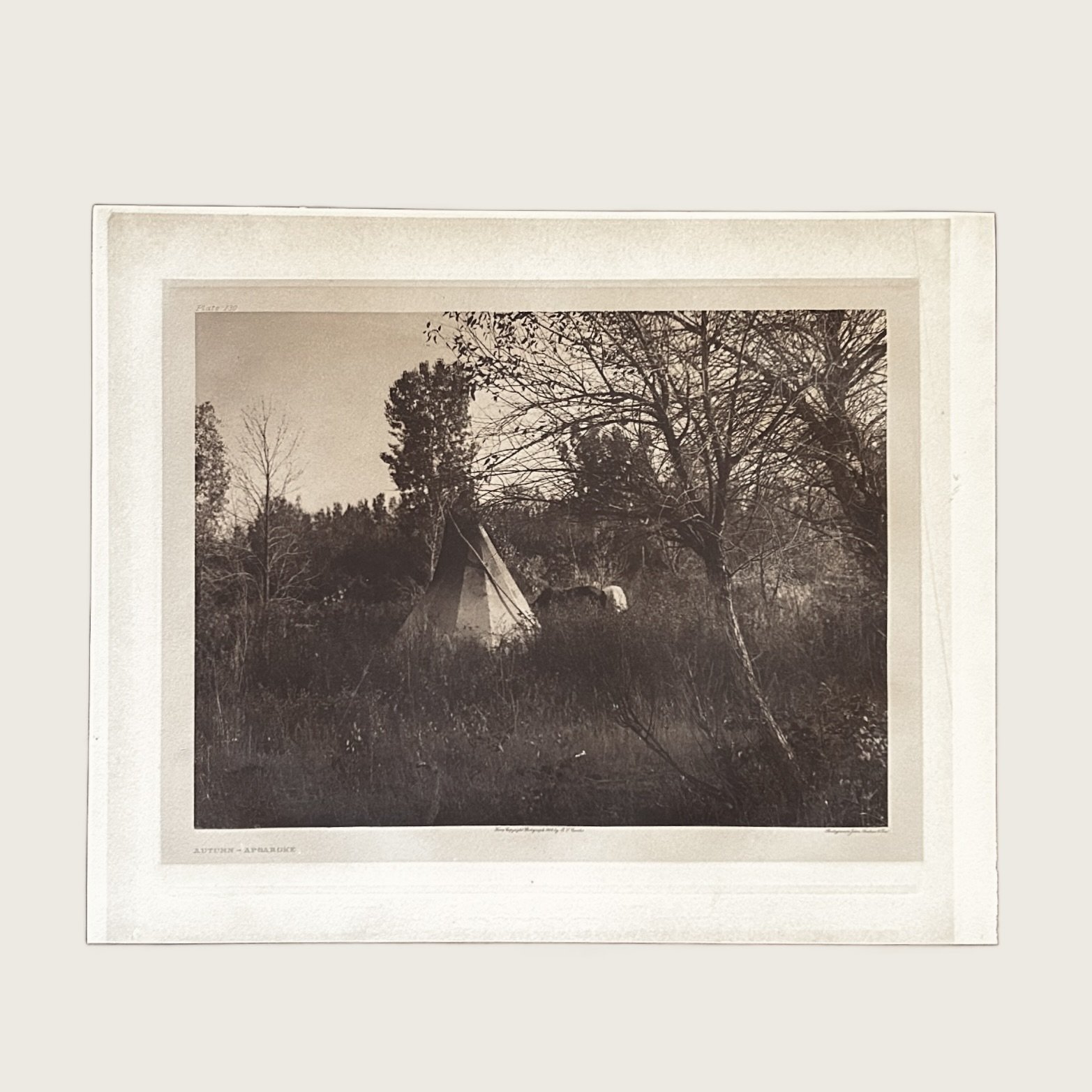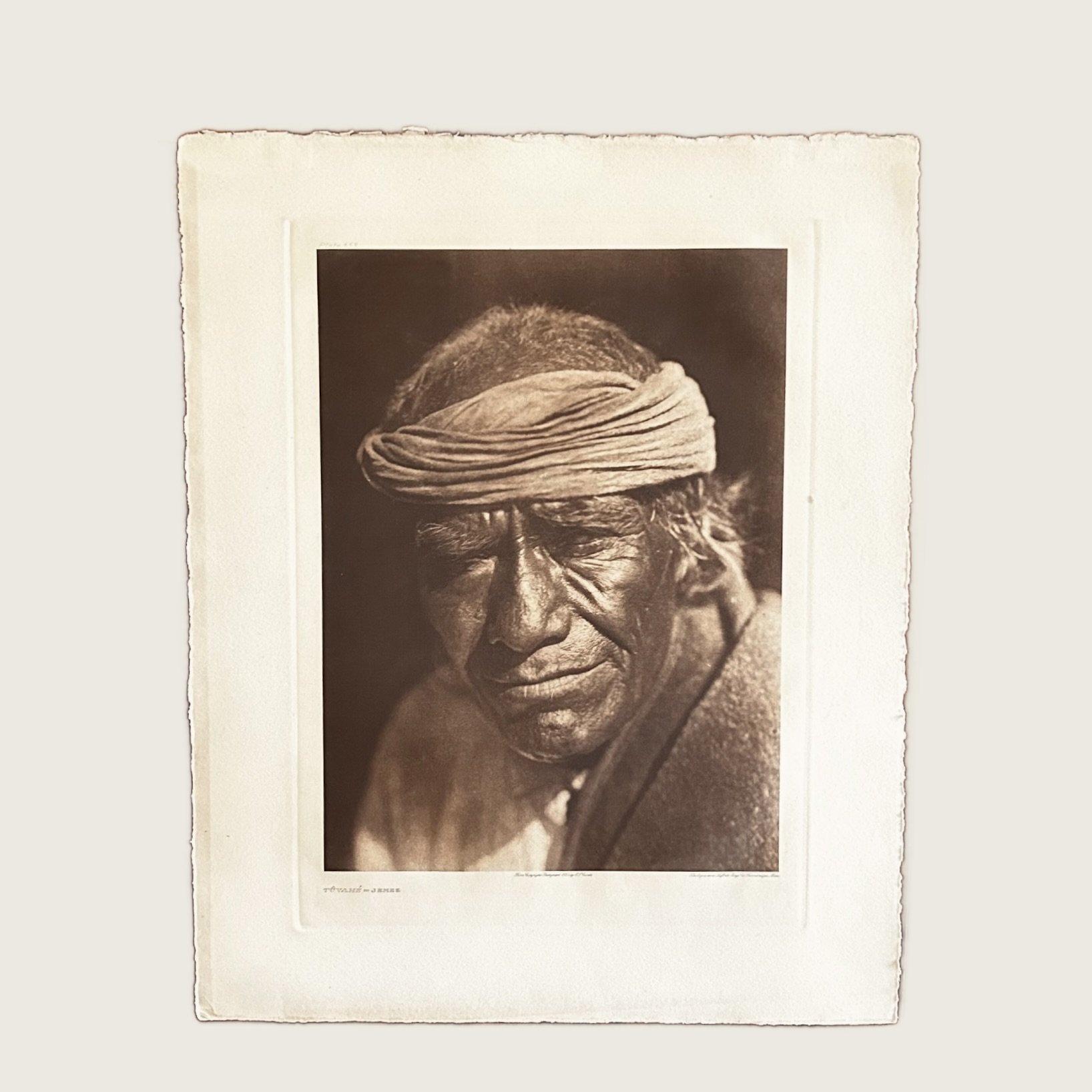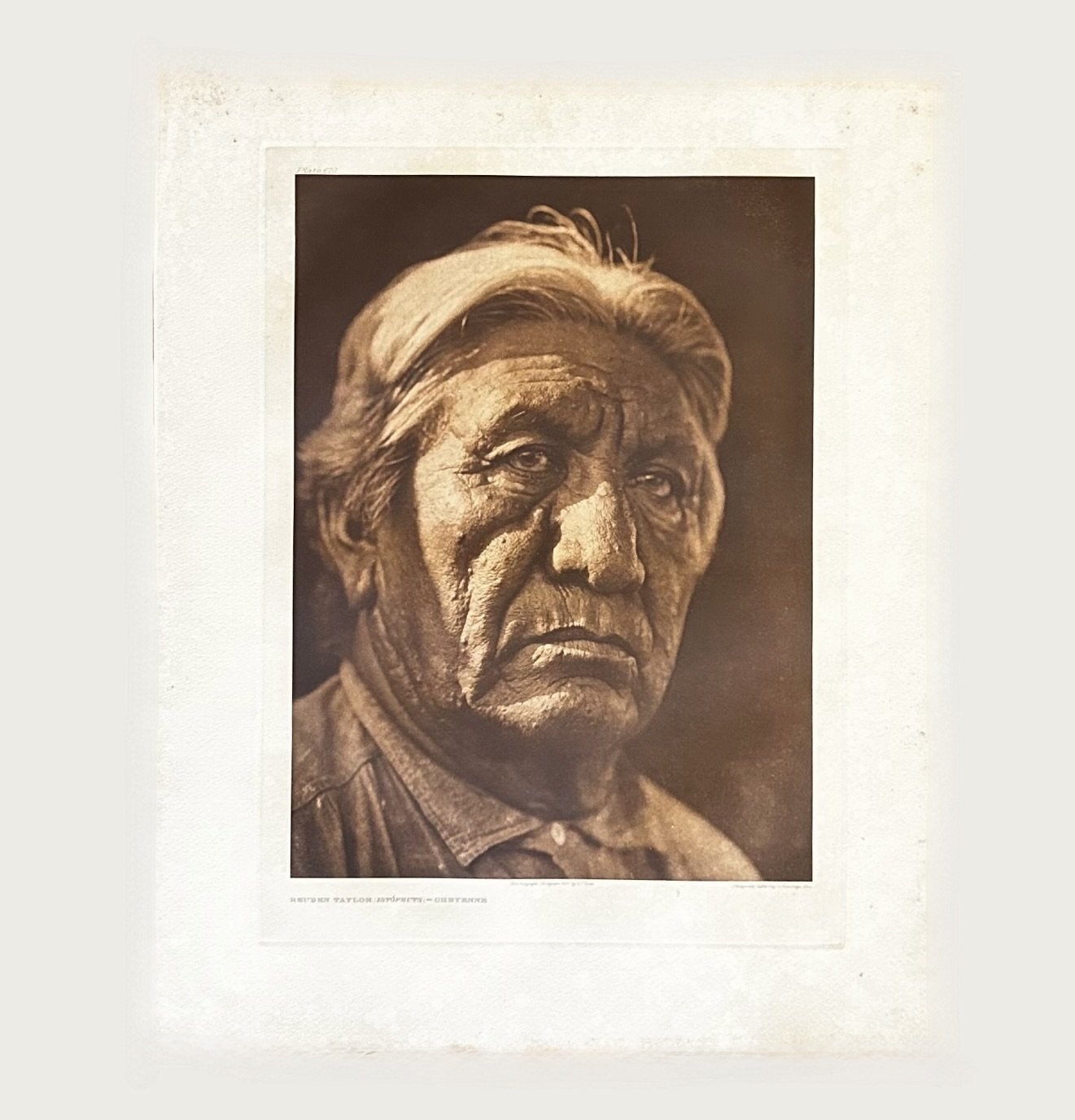 Image 1 of 4
Image 1 of 4

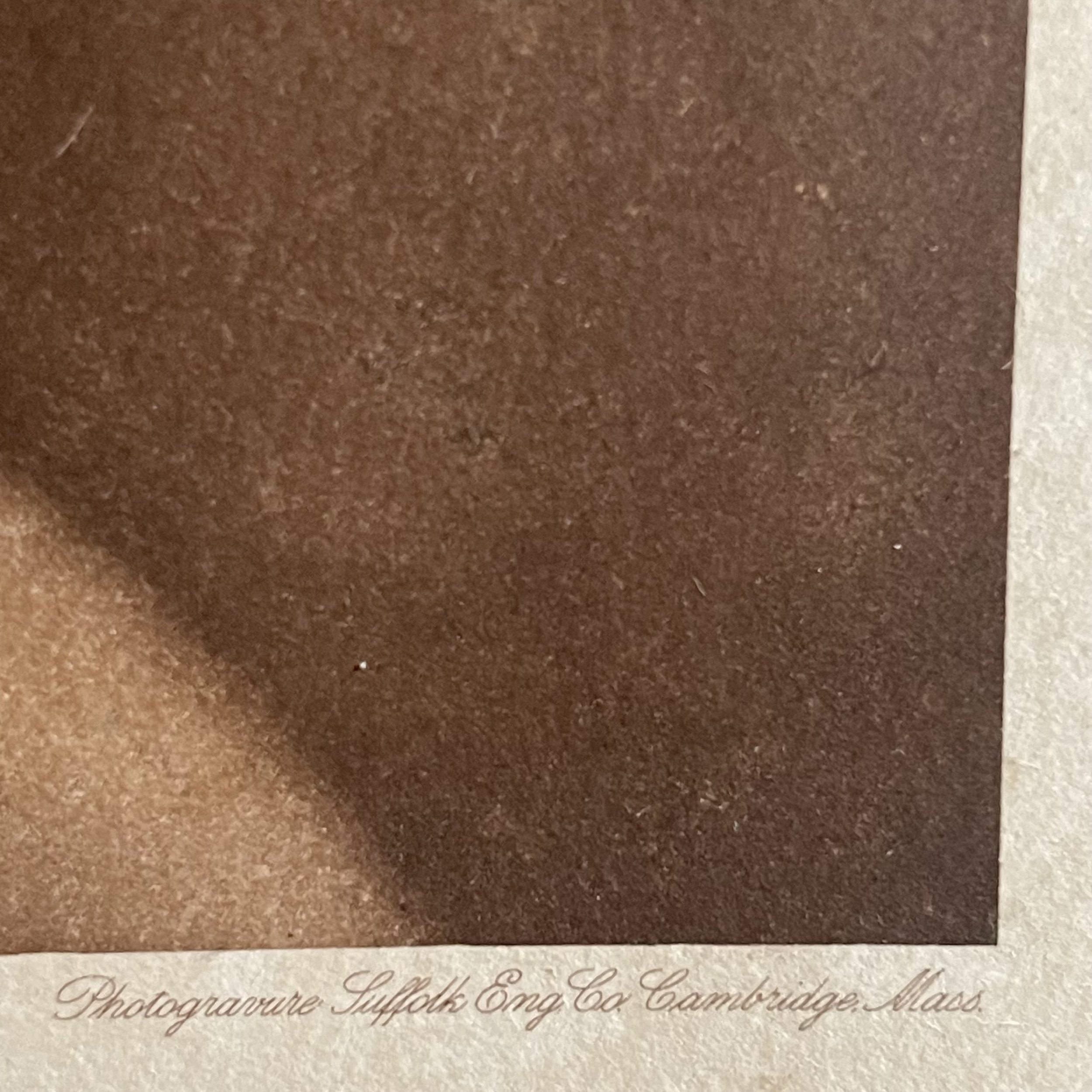 Image 2 of 4
Image 2 of 4

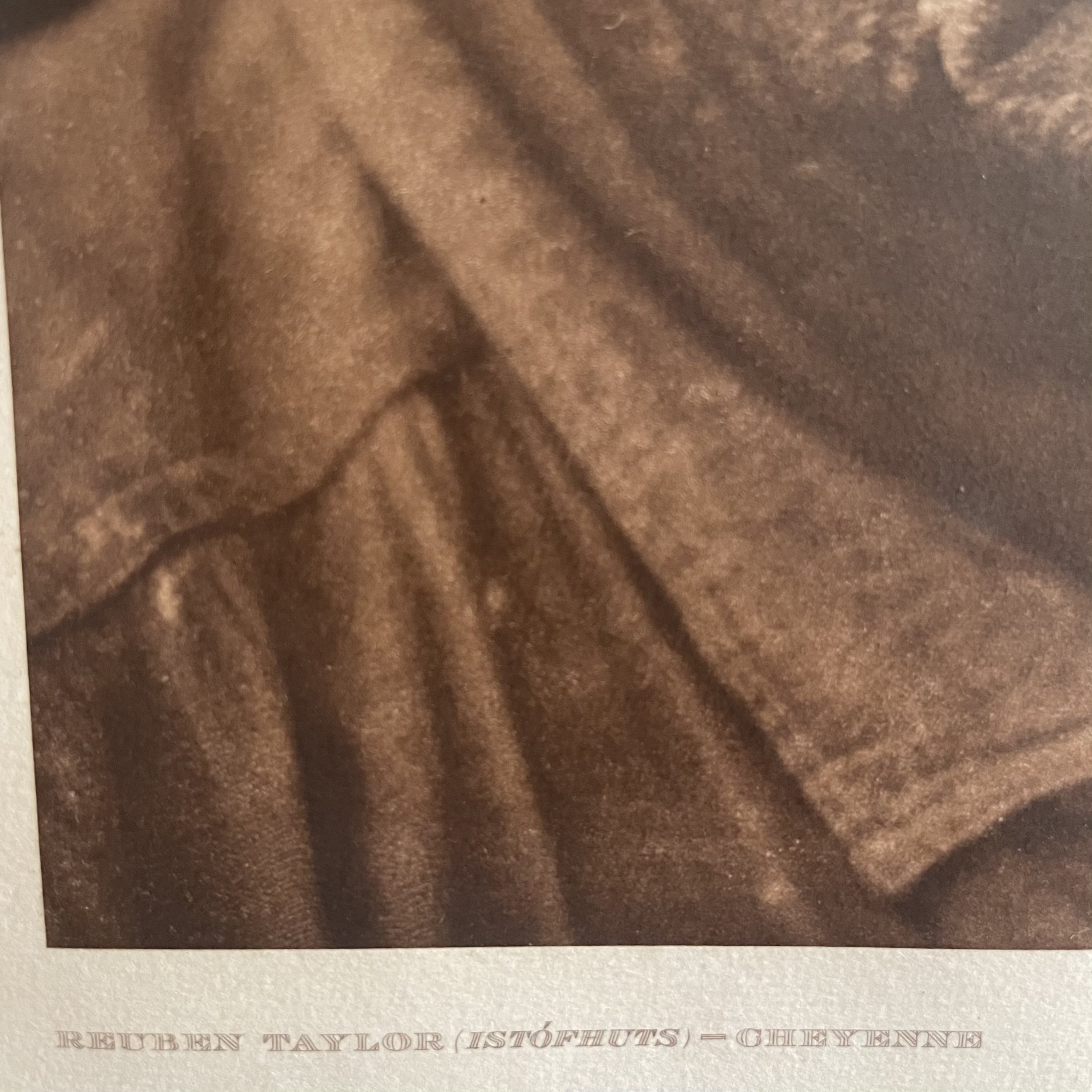 Image 3 of 4
Image 3 of 4

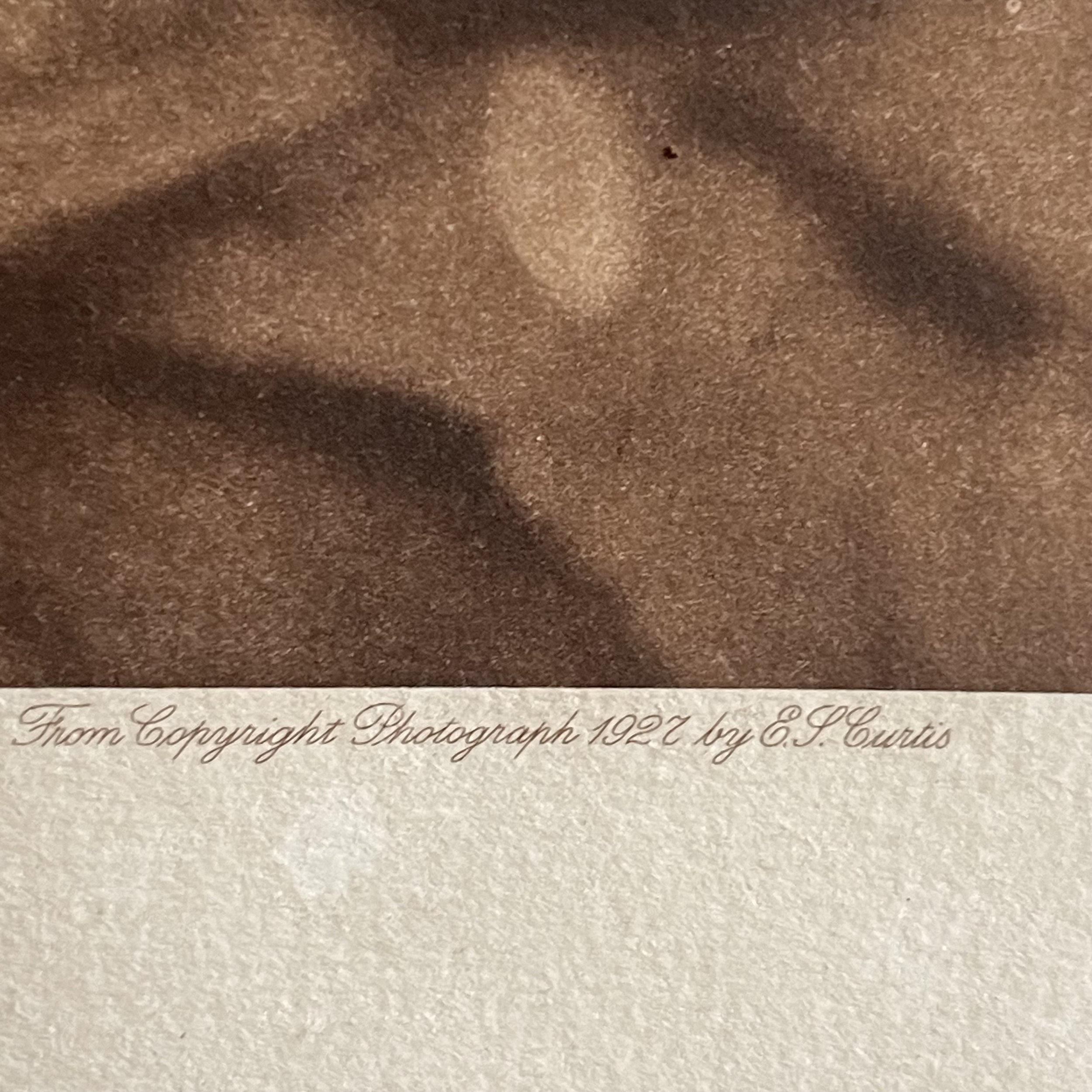 Image 4 of 4
Image 4 of 4





Edward S Curtis (1868-1952), Reuben Taylor (Istofhuts) – Cheyenne, 1927
Edward S Curtis (1868-1952) Title: Reuben Taylor (Istofhuts) – Cheyenne Plate: 670 Portfolio: Volume 19 Printer: Suffolk Eng. Co. Cambridge Mass Medium: Photogravure Date: 1927 Dimensions: Sheet: H 21 ½ W 17 ¼ Image: H 16 6/16 W 11 6/16
Taylor, a respected member of the Cheyenne tribe is photographed here with a solemn expression and proud stance, conveying a sense of dignity and strength.
Curtis’ work, while invaluable as a historical record, has also been criticised for romanticising and idealising Native Americans, often portraying them as noble but static figures, frozen in time.
Curtis’ perspective sometimes overlooked the complexities and evolving nature of Native American communities during the early 20th century, focusing instead on a vision of Native Americans as part of an “unspoiled” past.
Edward S Curtis (1868-1952) Title: Reuben Taylor (Istofhuts) – Cheyenne Plate: 670 Portfolio: Volume 19 Printer: Suffolk Eng. Co. Cambridge Mass Medium: Photogravure Date: 1927 Dimensions: Sheet: H 21 ½ W 17 ¼ Image: H 16 6/16 W 11 6/16
Taylor, a respected member of the Cheyenne tribe is photographed here with a solemn expression and proud stance, conveying a sense of dignity and strength.
Curtis’ work, while invaluable as a historical record, has also been criticised for romanticising and idealising Native Americans, often portraying them as noble but static figures, frozen in time.
Curtis’ perspective sometimes overlooked the complexities and evolving nature of Native American communities during the early 20th century, focusing instead on a vision of Native Americans as part of an “unspoiled” past.
Edward S Curtis (1868-1952) Title: Reuben Taylor (Istofhuts) – Cheyenne Plate: 670 Portfolio: Volume 19 Printer: Suffolk Eng. Co. Cambridge Mass Medium: Photogravure Date: 1927 Dimensions: Sheet: H 21 ½ W 17 ¼ Image: H 16 6/16 W 11 6/16
Taylor, a respected member of the Cheyenne tribe is photographed here with a solemn expression and proud stance, conveying a sense of dignity and strength.
Curtis’ work, while invaluable as a historical record, has also been criticised for romanticising and idealising Native Americans, often portraying them as noble but static figures, frozen in time.
Curtis’ perspective sometimes overlooked the complexities and evolving nature of Native American communities during the early 20th century, focusing instead on a vision of Native Americans as part of an “unspoiled” past.

